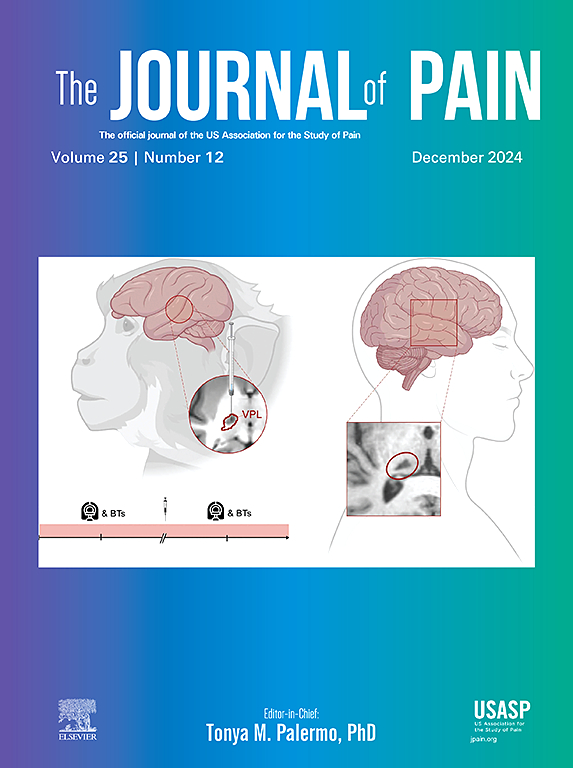Neural response associated with the modulation of temporal summation of second pain by affective touch
IF 4
2区 医学
Q1 CLINICAL NEUROLOGY
引用次数: 0
Abstract
Temporal summation of second pain (TSSP) is a phenomenon that has clinical relevance but insights into its functioning are limited. Lately, ‘affective touch’ (AT) has been shown to have pain relieving properties but only one study has investigated its effects on TSSP and the neural underpinnings of such interaction are unknown. In the present EEG study, thirty-six healthy participants went through three conditions where a TSSP protocol was applied in concomitance with no touch (NoT), discriminative touch (DT) and AT. A fourth no-pain no-touch condition acted as a baseline. Measures of attention during the four conditions and of pleasantness during the touch conditions were also recorded. Pain ratings were significantly lower only during the AT condition. The neural response during NoT, compared to the baseline, brought about a temporal decrease in power at delta and theta frequencies and a fronto-central increase mainly in the alpha rhythm. Adding AT to TSSP yielded, compared to NoT, a decrease in delta, theta and beta bands in midline regions at both central (Cz) and parietal (Pz) and also of gamma at Pz. Notably, DT was not associated with significant changes compared to pain alone (NoT), but a specific marked difference was found between AT and DT with the former showing a significant decrease in beta frequencies localized at Pz. While TSSP seems to be characterized by a modulation mostly of the lower frequencies, adding AT to TSSP brings a clear depression of all the major frequency bands. Additionally, the parietal beta reduction may be a biomarker of AT. Future studies can examine if such brain response can help finding a suitable intervention for TSSP-related chronic pain conditions.
Perspective
This study consolidates the idea that AT can lower pain in a TSSP paradigm and shows what are the brain (EEG) responses associated with both TSSP and TSSP modulation by AT. Given that TSSP is linked to central sensitization and that it can be used as an experimental model for chronic pain, our results pave the way for further studies into the neural mechanisms of AT-led analgesia, which can lead to future effective treatments.
求助全文
约1分钟内获得全文
求助全文
来源期刊

Journal of Pain
医学-临床神经学
CiteScore
6.30
自引率
7.50%
发文量
441
审稿时长
42 days
期刊介绍:
The Journal of Pain publishes original articles related to all aspects of pain, including clinical and basic research, patient care, education, and health policy. Articles selected for publication in the Journal are most commonly reports of original clinical research or reports of original basic research. In addition, invited critical reviews, including meta analyses of drugs for pain management, invited commentaries on reviews, and exceptional case studies are published in the Journal. The mission of the Journal is to improve the care of patients in pain by providing a forum for clinical researchers, basic scientists, clinicians, and other health professionals to publish original research.
 求助内容:
求助内容: 应助结果提醒方式:
应助结果提醒方式:


